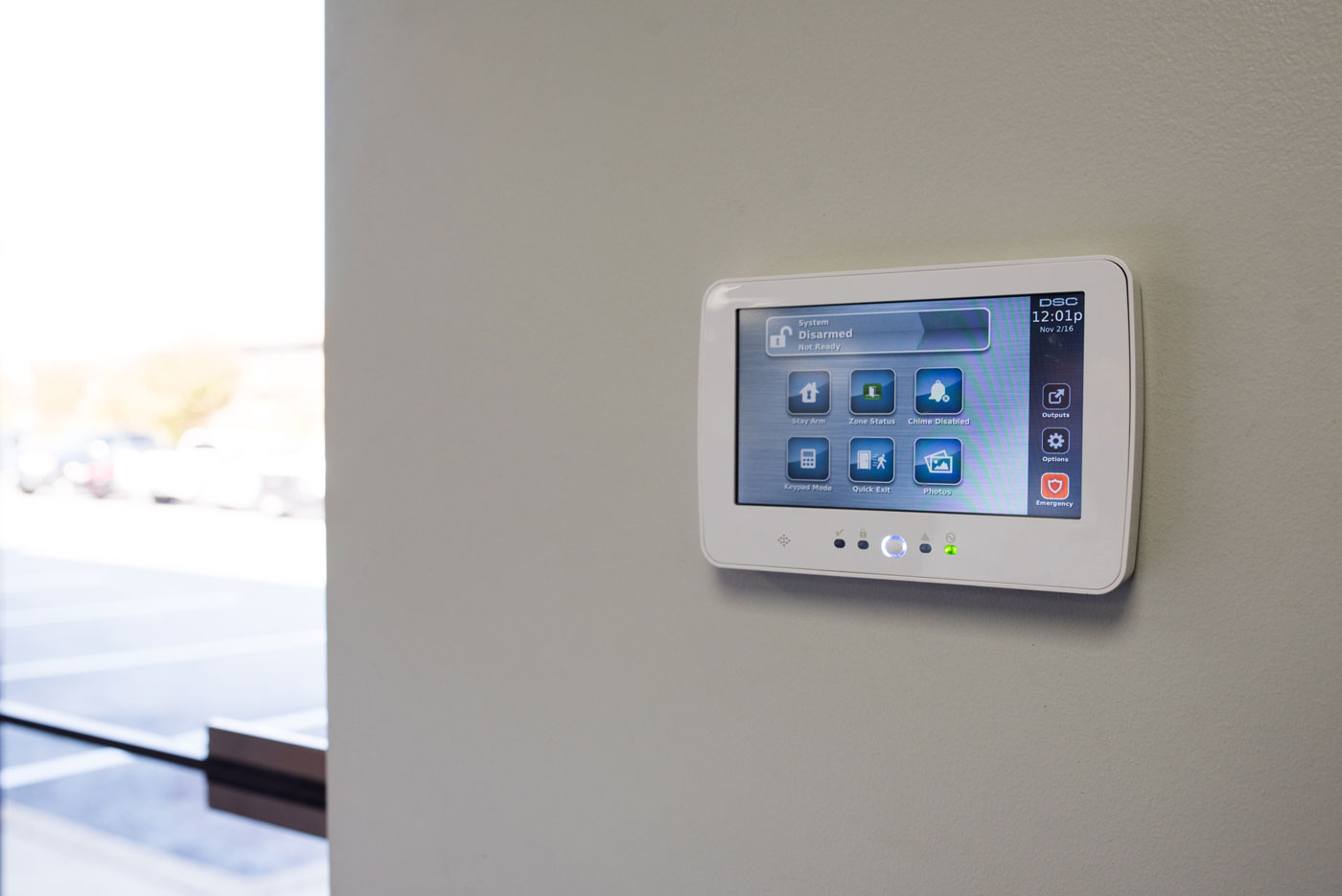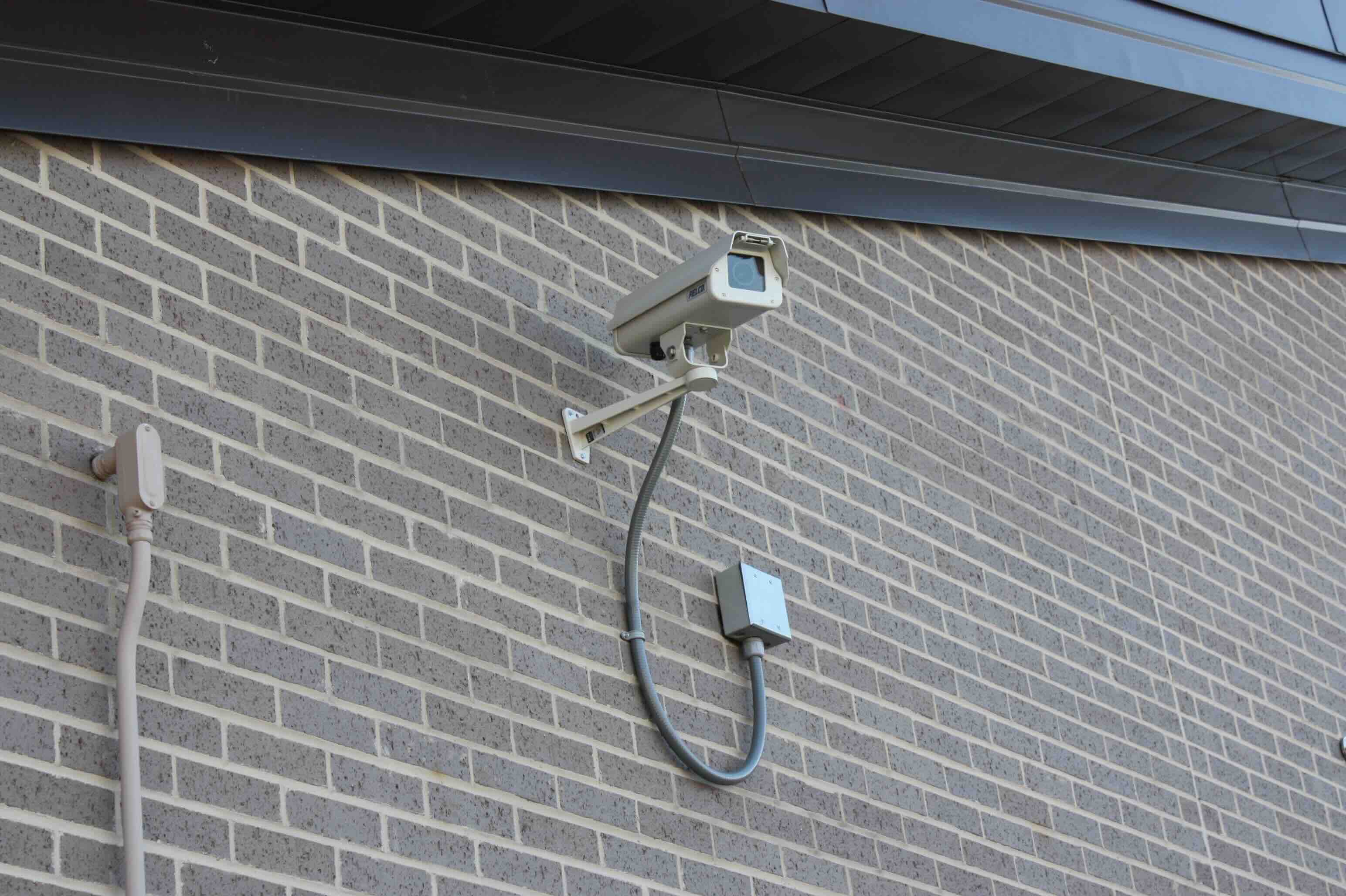Home>Home Security and Surveillance>What Steps Are Taken When An Alarm From A Host Intrusion Detection System Is Set Off


Home Security and Surveillance
What Steps Are Taken When An Alarm From A Host Intrusion Detection System Is Set Off
Modified: March 21, 2024
Learn how your home security and surveillance system responds when an alarm is triggered by a host intrusion detection system. Discover the necessary steps to ensure your safety.
(Many of the links in this article redirect to a specific reviewed product. Your purchase of these products through affiliate links helps to generate commission for Storables.com, at no extra cost. Learn more)
Introduction
Welcome to the world of home security and surveillance! In today’s society, ensuring the safety of our loved ones and protecting our valuable assets has become a top priority. With the advancements in technology, home security systems have evolved to provide comprehensive protection against potential threats.
One critical component of a robust home security system is a Host Intrusion Detection System (HIDS). This system plays a vital role in identifying and alerting homeowners to any potential intrusion attempts, providing an additional layer of defense against unauthorized access.
In this article, we will explore the various steps that are taken when an alarm from a Host Intrusion Detection System is set off. From initial alert handling to incident response and mitigation, we will delve into the intricate details of how these systems work to protect our homes and provide peace of mind.
So, let’s dive in and uncover the fascinating world of Host Intrusion Detection Systems!
Key Takeaways:
- When an alarm from a Host Intrusion Detection System is triggered, it sets off a series of steps including alert handling, investigation, incident response, and follow-up measures to ensure swift and effective protection against potential security threats.
- Host Intrusion Detection Systems (HIDS) play a crucial role in safeguarding homes and assets by detecting unauthorized access attempts, malware, and suspicious activities. The steps taken when an alarm is triggered help in containing and mitigating potential security incidents.
Overview of Host Intrusion Detection Systems (HIDS)
Host Intrusion Detection Systems, commonly referred to as HIDS, are security mechanisms designed to monitor and protect individual devices or hosts within a network. Unlike network-based intrusion detection systems that focus on monitoring network traffic, HIDS are specifically tailored to analyze activity on the host itself.
HIDS operate by continuously monitoring the host’s activities, including file system changes, log file analysis, system calls, and network connections. By analyzing these activities, HIDS can detect and alert users to potential threats, such as unauthorized access attempts, malware infections, and suspicious behavior.
HIDS comes in two primary forms: agent-based and agentless. Agent-based HIDS involves installing specialized software, known as agents, directly on the host systems. These agents collect data and send it to a centralized management console for analysis. On the other hand, agentless HIDS relies on network-based sensors to monitor and analyze network traffic, without the need for specific software installations on the hosts.
One of the key advantages of utilizing HIDS is that it provides real-time visibility into the activities occurring on the host. This enables prompt detection and response to potential security incidents, minimizing the impact of an attack or breach. HIDS can also provide valuable insights for forensic investigations, allowing security professionals to assess the extent of the damage and implement appropriate remedial measures.
To enhance the effectiveness of HIDS, they are often equipped with advanced features such as behavioral analysis, anomaly detection, and threat intelligence integration. Behavioral analysis involves profiling normal behavior on the host and raising alerts when deviations occur. Anomaly detection, on the other hand, identifies unusual patterns or activities that may indicate a security breach. Lastly, threat intelligence integration enables HIDS to stay updated with the latest known threats and attack vectors, improving its ability to detect and mitigate potential risks.
Types of Alarms in Host Intrusion Detection Systems
Host Intrusion Detection Systems (HIDS) employ various types of alarms to notify users about potential security breaches or suspicious activities on the host system. These alarms are designed to provide immediate alerts and allow for swift action to mitigate any potential threats. Let’s explore some of the common types of alarms used in HIDS:
1. Unauthorized Access Alarms: This type of alarm is triggered when an unauthorized user attempts to gain access to the host system. It can detect activities such as failed login attempts, brute-force attacks, or suspicious login patterns. Unauthorized access alarms serve as an early warning sign of a potential security breach.
2. Malware Detection Alarms: Malware detection alarms are activated when a HIDS identifies the presence of malicious software on the host system. This includes viruses, worms, Trojans, ransomware, and other types of malware. When detected, the alarm can help initiate a response to quarantine or remove the malicious software before it can cause further damage.
3. File Integrity Alarms: File integrity alarms are triggered when there are unauthorized modifications or changes to critical system files. HIDS continuously monitors the integrity of essential files and compares them to known good versions or checksums. Any discrepancies detected can indicate tampering or unauthorized modifications, leading to an alarm being raised.
4. Network Connection Alarms: HIDS monitors network connections made by the host system. It detects and raises alarms on suspicious or unauthorized network connections, such as connections to known malicious IP addresses or connections to unauthorized external devices. Network connection alarms help identify potential avenues of attack and can prompt immediate action to block or investigate such connections.
5. Anomaly Detection Alarms: Anomaly detection alarms are activated when HIDS detects unusual or abnormal behavior on the host system. This can include irregular patterns of file accesses, abnormal CPU or memory usage, or unexpected system calls. Anomaly detection alarms enable early detection of unknown and emerging threats that may not be captured by traditional signature-based detection methods.
6. Policy Violation Alarms: HIDS can enforce security policies on the host system and raise alarms when policy violations occur. These alarms may indicate unauthorized changes to system configurations, non-compliance with security standards, or violation of access control policies. Policy violation alarms help maintain the integrity and security of the host system by enforcing defined security guidelines.
By employing these various types of alarms, HIDS provide comprehensive monitoring of host systems, ensuring the timely detection and response to potential security threats. These alarms serve as valuable tools in enhancing the overall security posture and protecting sensitive data and resources.
Common Triggers for Alarms in Host Intrusion Detection Systems
Host Intrusion Detection Systems (HIDS) are designed to monitor and analyze activities on host systems to identify potential security breaches and suspicious behavior. These systems utilize various triggers to raise alarms when specific events or conditions occur. Let’s explore some of the common triggers that can activate alarms in HIDS:
1. Failed Login Attempts: HIDS monitors login attempts on the host system. If there are repeated failed login attempts from the same source IP address or a specific user account, an alarm is triggered. This can indicate brute-force attacks or password guessing attempts by unauthorized individuals.
2. Malware Signatures: HIDS maintains a database of known malware signatures and compares files and processes on the host system to these signatures. If a file or process matches a known malware signature, an alarm is raised. This helps in detecting malware infections and preventing further damage.
3. Unusual File Changes: HIDS monitors file system changes and raises alarms when there are unauthorized modifications or unusual activities. For example, if critical system files are modified or deleted without proper authorization, an alarm is triggered. This helps detect tampering or unauthorized changes to sensitive files.
4. Suspicious Network Traffic: HIDS analyzes network traffic on the host system and raises alarms for any suspicious or malicious activities. This could include connections to known malicious IP addresses, attempts to exploit known vulnerabilities, or communication with unauthorized external devices. Suspicious network traffic alarms help identify potential network-based attacks.
5. Abnormal System Behavior: HIDS monitors system calls, CPU usage, memory utilization, and other system-level activities. When there are deviations from normal behavior, such as excessive CPU or memory usage, a high number of system calls, or unusual patterns of system activity, an alarm is triggered. This helps detect anomalies that might indicate unknown or emerging threats.
6. Policy Violations: HIDS enforces security policies and monitors for any violations. When a user or process attempts to perform actions that violate defined security policies, such as modifying system files, accessing restricted directories, or executing unauthorized commands, an alarm is raised. Policy violation alarms help maintain the integrity and security of the host system.
7. Unexpected Privilege Escalation: HIDS monitors privilege levels and raises alarms when there are unexpected privilege escalations. For example, if a user account suddenly gains administrative privileges or if a process gains higher privileges than it should have, an alarm is triggered. This helps in detecting potential unauthorized access or privilege misuse.
By monitoring these common triggers, HIDS provides proactive detection of potential security incidents and allows for swift response to mitigate threats. The ability to quickly identify and respond to such alarms is crucial in preventing unauthorized access, minimizing the impact of malware infections, and maintaining the overall security of the host system.
Steps Taken When an Alarm is Set Off
When an alarm is set off in a Host Intrusion Detection System (HIDS), it signifies a potential security breach or suspicious activity on the host system. Prompt action is crucial to mitigate the threat and prevent further damage. Let’s explore the steps that are typically taken when an alarm is triggered:
1. Alert Notification: The first step is to notify the designated individuals or security team about the alarm. This can be done through various means such as email, SMS, or push notifications. The alert message should include relevant details about the triggered alarm, such as the type of alarm, the affected host system, and any additional information provided by the HIDS.
2. Alarm Triage: Upon receiving the notification, the security team initiates a process called alarm triage. This involves analyzing the severity and priority of the alarm based on its type and impact on the host system and network. High-priority alarms or alarms indicating immediate threats are given top priority during this triage process.
3. Investigation and Analysis: Once the alarm has been triaged, the security team starts investigating the root cause of the triggered alarm. They gather relevant information from the HIDS, such as log files, network traffic data, and system activity reports, to analyze the scope and impact of the potential breach or suspicious activity. This investigation helps in understanding the nature of the incident and determining the appropriate response.
4. Incident Response: Based on the findings of the investigation, the security team develops and implements an incident response plan. This plan outlines the actions and measures to be taken to contain, mitigate, and resolve the security incident. It may involve isolating the affected host system from the network, blocking suspicious network connections, and deploying additional security measures to prevent further damage.
5. Mitigation and Remediation: Once the incident response plan is executed, the focus shifts towards mitigating the impact of the incident and restoring the normal functioning of the host system. This may involve removing malware or unauthorized files, patching vulnerabilities, resetting compromised user accounts or passwords, and conducting system updates to improve security.
6. Forensic Investigation: After the immediate threat has been mitigated, a forensic investigation may be conducted to gather additional evidence and understand the extent of the security incident. This includes analyzing logs, examining system artifacts, and conducting memory or disk forensics to identify the source of the breach and any potential data compromises.
7. Reporting and Documentation: Throughout the entire process, it is essential to document all the steps taken, findings, and actions performed. This documentation provides a valuable reference for future incidents, helps in complying with regulatory requirements, and facilitates knowledge sharing within the security team.
By following these steps, organizations can effectively respond to alarms triggered by HIDS and ensure the rapid detection, containment, and resolution of potential security threats. Implementing a well-defined incident response process and conducting regular security audits can further enhance the effectiveness of the overall security posture.
Initial Alert Handling
When an alarm is triggered in a Host Intrusion Detection System (HIDS), it is crucial to handle the initial alert promptly and efficiently. The initial alert handling process sets the stage for further investigation and response. Let’s take a closer look at the steps involved in the initial alert handling:
1. Alert Acknowledgement: The first step in the initial alert handling process is to acknowledge the alarm. This involves confirming that the alarm has been received and that it is being actively addressed. Proper acknowledgement ensures that the security team is aware of the alarm and can initiate the necessary actions.
2. Alarm Triage: Once the alarm is acknowledged, it is triaged to determine the severity and priority of the alert. The severity is assessed based on the potential impact and consequences of the alarm, while the priority is determined by the immediacy and urgency of the response required. This triage process helps in prioritizing the alarms and allocating the appropriate resources.
3. Initial Assessment: After the triage, an initial assessment of the alarm is conducted. This involves reviewing the available information regarding the triggered alarm, such as the type of alarm, the affected host system, and any accompanying details or logs provided by the HIDS. The purpose of the initial assessment is to gain a preliminary understanding of the incident and its potential implications.
4. Escalation: Depending on the severity and complexity of the alarm, it may be necessary to escalate it to higher-level personnel or specialized teams for further analysis and action. The escalation process ensures that alarms are appropriately handled by the individuals or teams with the relevant expertise and authority.
5. Additional Data Gathering: During the initial alert handling, it is crucial to collect additional data and evidence related to the triggered alarm. This may involve gathering log files, network traffic data, system activity reports, or any other relevant information that can provide further insights into the incident. The data gathering process helps in building a comprehensive understanding of the alarm and aids in the investigation.
6. Communication: Effective communication is key during the initial alert handling process. It is essential to establish clear lines of communication between the security team members, management, and other stakeholders involved. Regular updates and timely sharing of information ensure that everyone is on the same page and can contribute effectively to the incident response efforts.
7. Documentation: Finally, it is crucial to document all the relevant information and actions taken during the initial alert handling. This documentation serves as a record of the incident and provides a valuable reference for future incidents, audits, or compliance requirements. Clear and detailed documentation helps ensure that important details are not lost and facilitates knowledge sharing within the security team.
By following these steps in the initial alert handling process, organizations can effectively respond to alarms triggered by HIDS and set the foundation for further investigation and response efforts. Efficient handling of the initial alert plays a critical role in mitigating potential threats and minimizing the impact on the host system and network.
When an alarm from a Host Intrusion Detection System is set off, the first step is to investigate the alert to determine if it is a real threat or a false positive. This may involve analyzing network traffic, system logs, and other relevant data to identify the source and nature of the potential intrusion.
Notification and Reporting
Notification and reporting are key components of the incident response process when an alarm is triggered in a Host Intrusion Detection System (HIDS). Promptly notifying the relevant stakeholders and generating comprehensive reports are essential for effective incident management. Let’s explore the steps involved in notification and reporting:
1. Notification of Incident Response Team: One of the first steps after an alarm is triggered is to promptly notify the designated incident response team. This team typically comprises individuals with specialized knowledge and skills in cybersecurity and incident response. They are responsible for coordinating the response efforts, investigating the incident, and taking appropriate actions to mitigate the threat.
2. Notification of Management: Alongside notifying the incident response team, it is crucial to inform the management about the triggered alarm. This ensures that the leadership is aware of the incident and can provide the necessary support and resources to address the situation effectively. Management involvement is essential for decision-making, allocating additional resources, and implementing necessary measures to mitigate risks.
3. Communication with Stakeholders: Depending on the severity and impact of the alarm, it may be necessary to communicate with other stakeholders such as IT teams, system administrators, or legal and compliance departments. Clear and timely communication keeps all relevant parties informed about the incident, enabling them to provide their expertise and support in resolving the issue.
4. Incident Reporting: Generating comprehensive incident reports is a critical aspect of incident response. These reports document the details of the triggered alarm, including the type of alarm, affected host system, timeline of events, actions taken, and any potential vulnerabilities or mitigating factors identified. Incident reports serve as valuable records for future reference, help identify patterns or trends, and provide lessons learned for continuous improvement.
5. External Notification (If Required): In some cases, particularly when there is a suspected or confirmed data breach or a legal requirement, external notifications may be necessary. This can include notifying law enforcement agencies, regulatory bodies, or affected customers or partners. Compliance with legal obligations and regulatory requirements is crucial during the notification process.
6. Post-Incident Analysis: After the initial response and resolution of the incident, a detailed post-incident analysis should be conducted. This analysis involves evaluating the effectiveness of the incident response process, identifying areas for improvement, and implementing any necessary changes to prevent similar incidents in the future. The insights gained from the analysis contribute to building a more resilient security posture.
7. Ongoing Communication: Throughout the incident response process, it is important to maintain ongoing communication with all relevant stakeholders. This includes providing regular updates on the incident status, progress of the investigation, and any further actions taken. Effective communication ensures transparency, builds trust, and facilitates a coordinated response across all parties involved.
By following these steps in notification and reporting, organizations can ensure a structured and effective incident response process when alarms are triggered in HIDS. Timely and clear communication, coupled with comprehensive reporting, plays a vital role in mitigating the impact of incidents, minimizing downtime, and continuously improving the security posture of the organization.
Investigation and Analysis
Investigation and analysis are crucial components of the incident response process when alarm is set off in a Host Intrusion Detection System (HIDS). These steps involve gathering and examining evidence to understand the nature and extent of the incident, identify the root cause, and develop an effective response strategy. Let’s delve into the key steps involved in investigation and analysis:
1. Evidence Collection: The first step in the investigation and analysis process is to collect evidence related to the triggered alarm. This includes gathering log files, network traffic data, system activity reports, and any other relevant information provided by the HIDS. Collecting a wide range of evidence helps in establishing a comprehensive view of the incident.
2. Analysis of Alarm Details: Next, the security team examines the details of the triggered alarm. They analyze the type of alarm, the affected host system, timestamps, and any accompanying information provided by the HIDS. This analysis provides insights into the specific incident and its potential impact on the host system and network.
3. Root Cause Analysis: The security team conducts a thorough investigation to determine the root cause of the incident. They examine the evidence and trace the chain of events that led to the alarm being triggered. This involves looking for indicators of compromise, signs of unauthorized access, or other factors that contributed to the incident. Identifying the root cause helps in developing appropriate response strategies and preventing similar incidents in the future.
4. Threat Analysis: In parallel with root cause analysis, a threat analysis is conducted to assess the severity and potential consequences of the incident. The security team examines the identified threat vectors, the tactics, techniques, and procedures (TTPs) used by the attacker, and any additional risks posed to the organization. This analysis helps in understanding the overall threat landscape and informs the incident response strategy.
5. Forensic Investigation: In certain cases, a forensic investigation may be required to gather additional evidence or to analyze compromised systems or devices. Forensic techniques, such as memory analysis, disk forensics, or network capture analysis, are employed to identify the full extent of the incident and gather evidence that can be used for legal purposes or future incident response planning.
6. Collaboration and Information Sharing: Throughout the investigation and analysis process, collaboration and information sharing among the incident response team and other stakeholders are vital. This ensures that knowledge and insights are shared, different perspectives and expertise are considered, and a comprehensive understanding of the incident is reached. Collaborative efforts improve the accuracy of the analysis and enable a more effective incident response.
7. Reporting and Documentation: Finally, findings from the investigation and analysis are documented in a comprehensive report. This report includes details of the incident, the root cause analysis, the threat assessment, and any recommendations for remediation or future prevention. Proper documentation provides a reference for future incidents and contributes to the organization’s knowledge base on incident response and cybersecurity.
By following these steps in the investigation and analysis process, organizations can gain a deep understanding of the triggered alarm, identify the root cause, and develop an effective incident response strategy. Thorough investigation and accurate analysis are essential in mitigating the impact of incidents and enhancing the overall security posture of the organization.
Incident Response and Mitigation
Incident response and mitigation are crucial steps in the incident management process when an alarm is triggered in a Host Intrusion Detection System (HIDS). These steps involve taking immediate action to contain the incident, mitigate the impacts, and restore normal operations. Let’s explore the key steps involved in incident response and mitigation:
1. Isolation: One of the first steps in incident response is to isolate the affected host system from the network. This prevents the incident from spreading to other systems and minimizes the impact on the overall infrastructure. Isolation can be achieved by disabling network interfaces, disconnecting from the network, or deploying firewall rules to block communication.
2. Containment: After isolating the affected host, the focus shifts to containing the incident. This involves identifying and disconnecting any compromised accounts or processes, terminating malicious connections, and stopping any malicious activities that may be ongoing. Containment measures are aimed at preventing further damage or unauthorized access.
3. Threat Eradication: Once the incident is contained, the next step is to eradicate the threat from the affected host system. This may involve removing malware, deleting unauthorized files or configurations, and patching any vulnerabilities that led to the incident. Thorough threat eradication measures ensure that the system is clean and secure before restoring its functionality.
4. Data Recovery: In cases where data is compromised or lost during the incident, data recovery measures should be taken. This may include restoring from backup systems or employing specialized recovery techniques to retrieve the lost data. Data recovery is crucial in minimizing the impact on business operations and ensuring the availability of critical information.
5. System Restoration: After eradicating the threat and recovering any lost data, the affected host system can be restored to its normal state. This may involve reconfiguring system settings, reinstalling software, or applying system updates. System restoration aims to bring the host system back to a secure and operational state.
6. Continuous Monitoring and Analysis: Throughout the incident response and mitigation process, continuous monitoring and analysis are essential. This involves closely monitoring the host system and network for any signs of recurrent or ongoing threats. Analysis of logs, network traffic, or system activities helps identify any residual risks or indicators of compromise that may require further action.
7. Lessons Learned and Improvement: After the incident is resolved, it is crucial to conduct a lessons learned session to identify areas for improvement in the incident response process. This may involve reviewing incident handling procedures, updating security policies, or implementing additional preventive measures to mitigate similar incidents in the future. Continuous improvement enhances the organization’s overall security posture.
By following these steps in incident response and mitigation, organizations can effectively respond to incidents triggered by HIDS, contain the threat, and minimize the impact on operations. Rapid and efficient incident response is essential in maintaining a secure environment and protecting against potential breaches or unauthorized access.
Follow-up Measures
After an incident has been resolved and the immediate response and mitigation steps have been taken, it is essential to implement follow-up measures to prevent future incidents and strengthen the overall security posture. These measures focus on learning from the incident, improving security controls, and minimizing the likelihood of similar incidents occurring. Let’s explore some key follow-up measures that organizations should consider:
1. Post-Incident Analysis and Review: Conduct a comprehensive post-incident analysis to understand the root cause, impacts, and effectiveness of the incident response process. Review the incident handling procedures, incident response plan, and overall security controls to identify areas for improvement. This analysis helps identify any gaps or weaknesses that need to be addressed.
2. Update Security Policies and Procedures: Based on the findings of the post-incident analysis, update or refine the organization’s security policies, procedures, and guidelines. Incorporate lessons learned from the incident into these documents to enhance security controls and response capabilities. Review access control policies, password management procedures, security awareness training, and incident response protocols.
3. Implement Security Enhancements: Identify and implement additional security enhancements to reduce the likelihood of similar incidents in the future. This may include deploying advanced threat detection systems, improving network segmentation, strengthening access controls, or implementing multi-factor authentication. Regularly assess and update security technologies and tools to stay ahead of evolving threats.
4. Staff Training and Awareness: Provide targeted training and security awareness programs to employees and stakeholders based on the lessons learned from the incident. Increase awareness about common attack vectors, social engineering techniques, and best practices for secure computing. Foster a culture of security within the organization and encourage reporting of suspicious activities or potential threats.
5. Incident Response Plan Updates: Revise and update the incident response plan based on the insights gained from the incident. Ensure that the plan reflects the organization’s current infrastructure, personnel, and potential risks. Regularly test and validate the plan through tabletop exercises and simulated incident scenarios to ensure its effectiveness in real-world situations.
6. Engagement with External Partners: Strengthen partnerships with external entities such as law enforcement agencies, incident response teams, or industry forums. Collaborate with these partners to share threat intelligence, best practices, and lessons learned. Engaging with the broader security community helps stay informed about emerging threats and enhances incident response capabilities.
7. Continuous Monitoring and Incident Response: Implement robust monitoring systems to continuously detect and respond to potential incidents. Monitor network traffic, log files, and system activities to identify any unusual patterns or indicators of compromise. Stay vigilant and maintain incident response readiness to swiftly address potential security incidents.
By implementing these follow-up measures, organizations can enhance their security posture, strengthen incident response capabilities, and minimize the likelihood and impact of future security incidents. Proactive measures, continuous evaluation, and ongoing improvement are crucial in maintaining a resilient security environment.
Conclusion
Home security and surveillance are of utmost importance in today’s society, and Host Intrusion Detection Systems (HIDS) play a vital role in ensuring the safety and protection of our homes and valuable assets. By continuously monitoring and analyzing activities on host systems, HIDS can detect and alert users to potential security breaches, unauthorized access attempts, and suspicious behavior.
In this article, we explored the various steps involved when an alarm is triggered in a HIDS. From the initial handling of the alert to investigation, incident response, and follow-up measures, each step plays a crucial role in effectively identifying, containing, and mitigating potential security incidents.
We discussed the different types of alarms used in HIDS, including unauthorized access alarms, malware detection alarms, file integrity alarms, network connection alarms, anomaly detection alarms, and policy violation alarms. Each alarm serves as an early warning system, providing valuable insights into potential threats and enabling swift action.
We also explored the importance of proper notification and reporting during incident response. Timely and clear communication with the incident response team, management, and other stakeholders ensures a coordinated approach in addressing the incident and minimizing the impact on operations. Generating comprehensive incident reports helps document the details of the incident, track the root cause, and identify areas for improvement.
Furthermore, we highlighted the significance of thorough investigation and analysis in incident response. By gathering evidence, conducting root cause analysis, and performing threat assessments, organizations can gain a deeper understanding of security incidents, prevent future occurrences, and strengthen their overall security posture.
Lastly, we emphasized the importance of follow-up measures, including post-incident analysis, updating security policies, implementing security enhancements, providing staff training and awareness programs, and continuously monitoring for potential incidents. These measures contribute to ongoing improvement and help organizations stay resilient against emerging security threats.
In conclusion, the utilization of HIDS and the implementation of a comprehensive incident response framework are essential for maintaining a secure home environment. By following the steps outlined in this article and continuously improving security measures, individuals and organizations can effectively protect their homes, assets, and loved ones from potential security breaches and vulnerabilities.
Frequently Asked Questions about What Steps Are Taken When An Alarm From A Host Intrusion Detection System Is Set Off
Was this page helpful?
At Storables.com, we guarantee accurate and reliable information. Our content, validated by Expert Board Contributors, is crafted following stringent Editorial Policies. We're committed to providing you with well-researched, expert-backed insights for all your informational needs.













